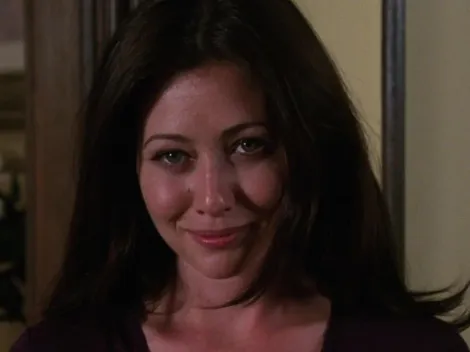Today marks the release anniversary of “Apocalypse Now,” Francis Ford Coppola’s groundbreaking 1979 war epic that redefined how cinema could portray the chaos and madness of the Vietnam War. The film’s production is as legendary as the story it tells, filled with tales of extreme weather, logistical nightmares, and extraordinary dedication from its cast and crew. Even decades later, it remains one of the most ambitious—and notorious—filmmaking endeavors in Hollywood history.
From Marlon Brando’s improvisational brilliance to Martin Sheen’s grueling journey through the Philippine jungle, every element of Apocalypse Now carries a story worth telling. The behind-the-scenes moments reveal not just the challenges of shooting a war film, but also the passion, risk, and creativity that turned Coppola’s vision into a cinematic masterpiece. Here are ten fascinating facts from the making of this legendary title.
Willard and Chef’s Time Leap

Source: IMDb
In “Apocalypse Now,” the scenes of Willard and Chef navigating the jungle were filmed far apart in time. Chef’s search for mangoes and his encounter with a tiger happened over a year before the shots of him clambering back onto the boat, ripping off his shirt, and screaming. Despite the months-long gap, Coppola’s direction stitched these moments together flawlessly, keeping the characters’ peril and intensity alive on screen.
Willard’s Unscripted Breakdown

Source: IMDb
Willard’s most intense hotel-room moment was completely unplanned. Martin Sheen, struggling with personal demons and heavily intoxicated, let the cameras roll as he punched a real mirror, cutting his thumb, and even attempted to attack director Francis Ford Coppola. Despite the chaos, Sheen insisted on continuing, channeling his raw emotions into the scene.
Shooting Blind in the Philippines

Source: IMDb
During production in the Philippines, “Apocalypse Now” faced an unusual challenge: there were no local film laboratories. Every reel of footage had to be sent to the U.S. for processing, which meant Francis Ford Coppola and his crew shot the entire movie without ever seeing the results. They relied entirely on instinct, planning, and trust in their performances, making the picture’s eventual triumph all the more remarkable.
Coppola Bets Everything

Source: IMDb
As “Apocalypse Now” spiraled wildly over budget, Francis Ford Coppola put his own fortune on the line, investing $7 million of personal money to keep the project alive. When costs continued to climb, he went even further, mortgaging his house and Napa Valley winery to see the film through. His gamble paid off, turning a near-financial disaster into one of cinema’s most celebrated masterpieces.
From Six Weeks to 16 Months

Source: IMDb
What was meant to be a six-week shoot stretched into an epic 16-month ordeal. The jungle, unpredictable weather, and countless logistical challenges turned every day into a battle for the crew. By the time filming wrapped, the production had transformed into a test of endurance, patience, and sheer determination.
Laurence Fishburne’s Early Start

Source: IMDb
Laurence Fishburne was only 14 when he began playing Tyrone “Mr. Clean” Miller in 1976, having lied about his age to meet the legal requirements for filming. By the time “Apocalypse Now” finally hit theaters, four years of shooting and post-production had passed, making him 18 at release.
Joe Estevez Steps In

Source: Jemal Countess/Getty Images
Editing “Apocalypse Now” took nearly three years, and during the process Coppola realized additional voice-overs were needed for Willard. With Martin Sheen unavailable, his brother Joe Estevez stepped in, delivering nearly identical narration and even standing in during Sheen’s 1976 heart attack. So seamless was Estevez’s contribution that even Coppola later admitted he couldn’t tell which scenes featured Sheen and which featured Estevez.
Kilgore’s Legendary Eleven Minutes

Source: IMDb
Robert Duvall’s Oscar-nominated performance as Colonel Kilgore lasts just eleven minutes on screen, yet it remains one of the most iconic roles. Every line, gesture, and expression was crafted to perfection, leaving a lasting impression far beyond his brief appearance. In that short span, Duvall created a character that continues to haunt and thrill audiences decades later.
Brando’s Unforgettable Improvisation

Source: Youtube (Through Tarantino’s Eyes)
Marlon Brando famously improvised much of Colonel Kurtz’s dialogue, including an 18-minute monologue, of which only two minutes made it into the final cut. Those who heard the full speech, like screenwriter Meade Roberts, found it mostly brilliant despite occasional incoherence. At the end, Brando reportedly told Coppola, “Francis, I’ve gone as far as I can go. If you need more, you can get another actor.”
Roger Corman’s Stern Warning

Source: IMDb
Before filming began, Coppola sought guidance from his mentor Roger Corman about shooting in the Philippines. Corman’s blunt advice? “Don’t go.” Ignoring the warning, Coppola forged ahead, setting the stage for one of the most chaotic and legendary productions in film history.





